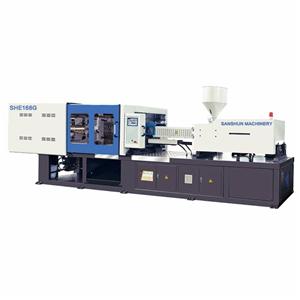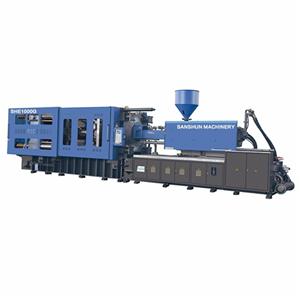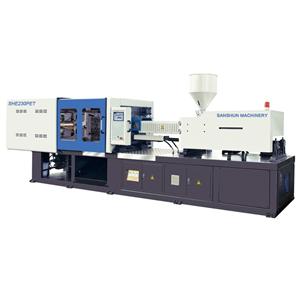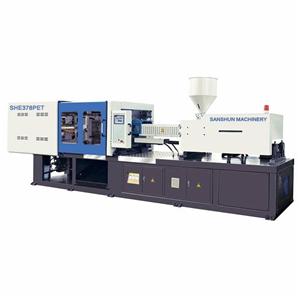- Home
- >
- News & Resources
- >
- Our Blog
- >
- How to prevent deformation of injection products
In the process of injection molding, we often encounter problems such as deformation of injection products, deviations in dimensions, weld marks or warpage of deformation. Today I will share with you the injection molding technology to help you better control injection molded parts to size.
Mold design
1. First of all, we must fully understand the technical requirements of the mold structure, material, hardness, accuracy and other aspects of the user, including whether the shrinkage of the formed plastic material is correct, whether the product 3D size modeling is complete and reasonable processing analysis.
2. Fully consider all the places where the appearance of shrinkage holes, flow marks, draft angle, weld lines and cracks of injection molded products are affected.
3. Simplify the processing method of the mold as much as possible without hindering the function of the injection molded product and the design of the pattern.
4. Whether the selection of parting surface is appropriate, careful selection must be made on the mold processing, forming appearance and deburring of shaped parts.
5. Whether the ejection method is appropriate, whether the pusher, discharge plate, ejection sleeve and other methods are used, and whether the position of the ejector and discharge plate is appropriate.
6. Whether the adoption of the side core-pulling mechanism is appropriate, the action is flexible and reliable, and there should be no jamming.
7. Which method is used for temperature control is more suitable for plastic products, which structure circulation system is used for temperature control oil, temperature control water, and coolant, and whether the size, number, and location of coolant holes are appropriate.
8. The gate form, the size of the material channel and the inlet, whether the gate position and size are appropriate.
9. The influence of heat treatment deformation of various modules and mold cores and whether the selection of standard parts is appropriate.
10. Whether the injection volume, injection pressure and clamping force of the injection molding machine are sufficient, whether the nozzle R, gate sleeve aperture, etc. are properly matched. Comprehensive preparation for analysis from these aspects should be strictly controlled from the initial stage of product parts.
Process manufacturing
Although full consideration and arrangement have been made in the design stage, many problems and difficulties will occur in actual production. We should try our best to meet the original intention of the design in production and find out that the actual processing is more effective, more economical and reasonable Craftsmanship.
1. Select economically adaptable machine tool equipment for 2D and 3D processing schemes.
2. You can also consider appropriate tooling and fixtures for auxiliary preparation in production, the reasonable use of tools, prevent product parts from deformation, prevent fluctuations in product part shrinkage, prevent product parts from demolding and deform, improve mold manufacturing accuracy, reduce Small errors, prevent changes in mold accuracy, etc., a series of production process requirements and solutions.
3. Here are the reasons for the dimensional errors of the British Plastics Association (BPF) molded parts and the distribution of their proportions:
A: The mold manufacturing error is about 1/3;
B: 1/6 error caused by die wear;
C: The error caused by the unbalanced shrinkage rate of the formed parts is about 1/3;
D: The error caused by the difference between the predetermined shrinkage rate and the actual shrinkage rate is about 1/6.
The total error = A + B + C + D, so it can be seen that the manufacturing tolerance of the mold should be less than 1/3 of the dimensional tolerance of the formed part, otherwise the mold is difficult to ensure the geometric size of the formed part.
Usually production
The fluctuation of geometric dimensions after plastic parts are formed is a common problem, and it is a phenomenon that often occurs:
1. Control of material temperature and mold temperature
Different grades of plastic have different temperature requirements, and the poor flowability of plastic materials and the use of more than two types of mixtures will have different situations. Plastic materials should be controlled within the optimal flow value range.
These are usually easy to do, but the control of the mold temperature is more complicated. Different geometric shapes, sizes and wall thickness ratios of the shaped parts have certain requirements on the cooling system. The mold temperature largely controls the cooling time; Therefore, keep the mold at an allowable low temperature state as much as possible to shorten the injection cycle and improve production efficiency. If the mold temperature changes, the shrinkage rate will also change, the mold temperature will remain stable, and the dimensional accuracy will be stable, thereby preventing molded parts The deformation, poor gloss, cooling spots and other defects make the physical properties of the plastic in the best state.
Of course, there is also a debugging process, especially the multi-cavity molding is more complicated. Therefore, the mold temperature cannot be changed at will during the production process. The setting of the mold temperature should be within the recommended temperature range of the material.
2. Adjustment and control of pressure and exhaust:
The injection pressure is appropriate, and the matching of the clamping force should be determined when the mold is debugged. The air in the cavity formed by the mold cavity and the core and the gas generated by the plastic must be discharged from the exhaust groove outside the mold, such as exhaust Poor gas will cause insufficient filling, resulting in weld marks or burn defects.
These three forming defects sometimes appear at the same location occasionally. When there are thick walls around the thin-walled parts of the molded part, shrink marks will appear when the mold temperature is too low, and burns will occur again when the mold temperature is too high. Usually, weld marks will appear at the burned part.
Exhaust grooves are often overlooked, and are generally in a small state. Therefore, as long as no burrs are generated, the depth of the exhaust shoulder should be as deep as possible. A large-sized ventilation groove is opened at the rear of the shoulder to pass through the shoulder After the gas can be quickly discharged out of the mold, if there is a special need to open the vent groove on the top rod, the reason is the same. First, there is no flash, and the second is that the outgassing can be effective.
3. Supplementary adjustment control of the size of injection molded parts
Due to the difference in the shape and size of some plastic parts, deformation and warpage will occur with the changes in temperature and pressure loss after demolding. At this time, some auxiliary tooling fixtures can be adjusted quickly and promptly after the molded part is out of the mold to take remedial measures and get better correction and adjustment effects after it is naturally cooled and set.
If strict management is ensured throughout the injection molding process, the size of the injection molded parts will be ideally controlled.







